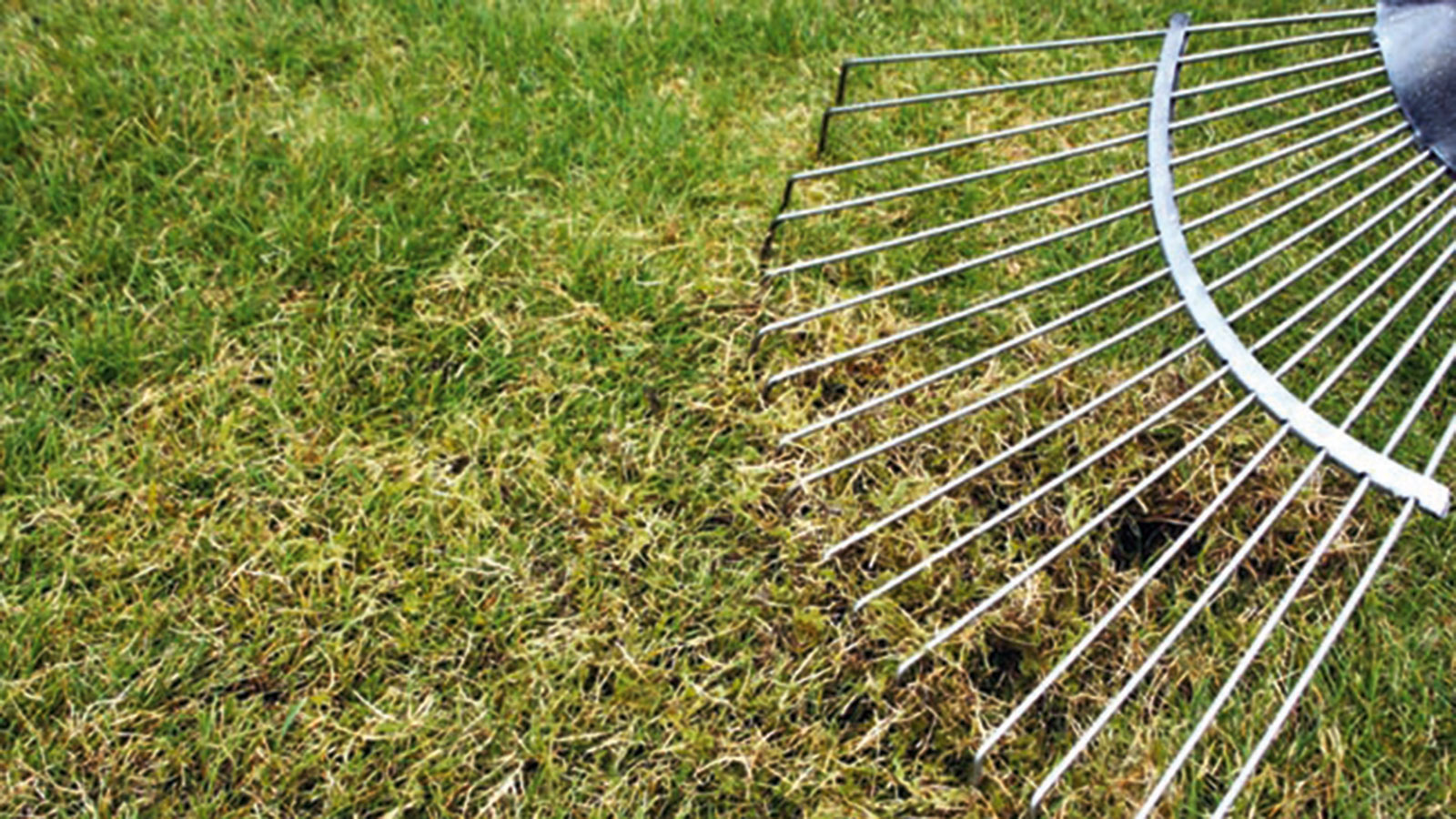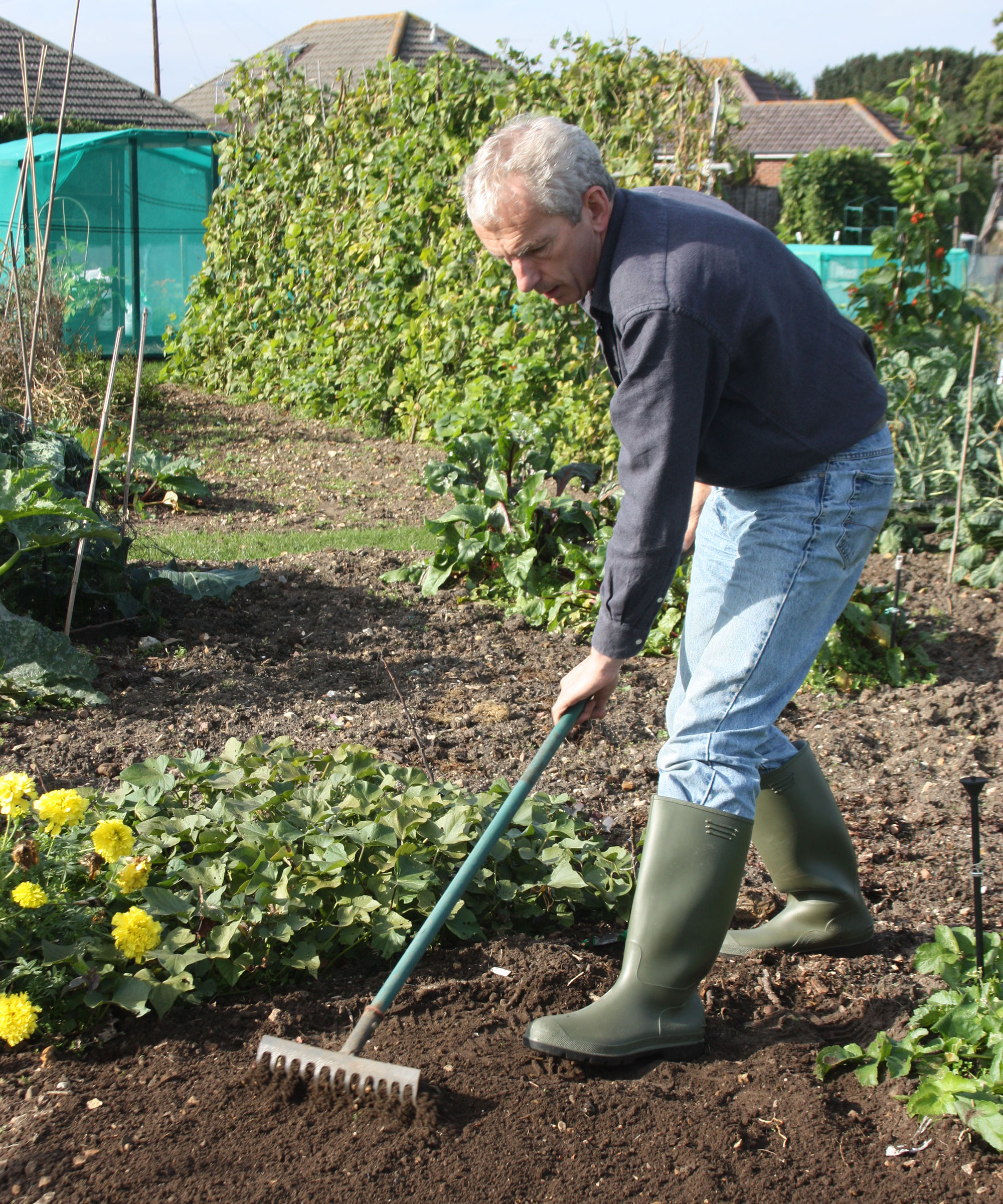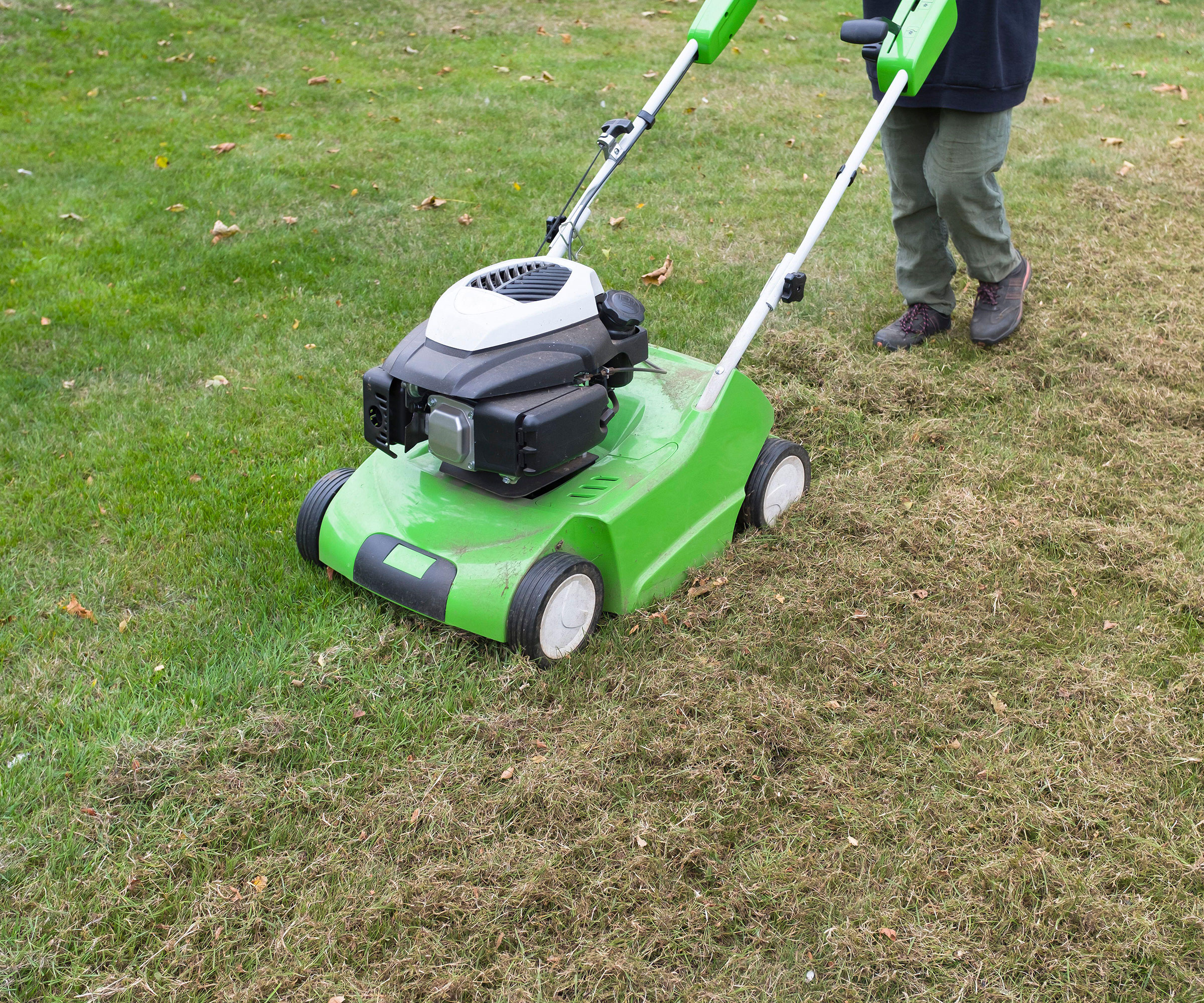When to scarify a lawn – experts offer advice to get the timing right
Make sure you complete this key lawn care task at the correct time of year


A major part of caring for your lawn properly is knowing when to complete the essential tasks that will keep it looking its best. Getting the timing right for scarifying a lawn is key to ensuring it's done successfully without causing excess (and uneccessary) damage to your lawn. After all, there's no point going to the effort of removing dead moss and thatch from your lawn, only to cause other problems that can hamper the longterm growth and health of your grass.
'A healthy, lush lawn is a homeowner's pride and joy, and proper maintenance is crucial to achieving that goal. One essential task in lawn care is scarification – the process of removing accumulated thatch and debris to improve air, water, and nutrient penetration,' says Jonathan Ames, a lead designer at online landscape design company Bacqyard.
So when exactly should you think about scarifying your lawn, and how often should you be doing it? We put the questions to lawn care experts to get their top timing tips.

A spring tine rake is a suitable tool ideal for manually scarifying a lawn
When to scarify a lawn
'Spring and fall are the best times to scarify your lawn. It’s a job that generally only needs doing once a year, but doing it twice a year can be beneficial,' says gardening expert Tim Rumball.
'If necessary, before you scarify, treat the lawn area with lawn sand to kill moss, wait until the moss blackens, mow the grass, then firmly rake out the dead moss and thatch,' he adds. 'This can be done by hand with a spring-tined lawn rake, but is hard work. Using an electric scarifier fitted with a rake roller makes it easy.'
If you want to do it manually, a spring tine rake, such as this Bully Tools 24-Tine leaf and thatching rake from Amazon, would be suitable.

Tim Rumball was editor of Amateur Gardening magazine in the UK for 20 years. He is a keen grower of edibles and wrote a popular series called Grow, Cook and Eat. He is also known for his practical no-nonsense approach to gardening.
Ruth Hayes, a gardening expert for Homes & Gardens, is in agreement. 'Spring and fall are the best times to scarify a lawn. In spring it removes all the debris and dead plant material that have accumulated over the winter, which lets more light, air, fertilizer and water to the roots so the lawn can grow green and thick.
Design expertise in your inbox – from inspiring decorating ideas and beautiful celebrity homes to practical gardening advice and shopping round-ups.
'When done as part of your fall lawn care, scarifying helps to improve the drainage of your lawn, helping avoid problems with waterlogging and compaction of the soil that can be caused by higher levels of rainfall and snow melt.'

Ruth is the gardening editor of Amateur Gardening magazine, the UK's oldest weekly magazine. She is horticulturally trained and has qualifications from the Royal Horticultural Society. Ruth spends her working days writing about and photographing the gardening jobs that our readers should be carrying out each week and month, and tests many new products that arrive on the gardening market. She often scarifies her lawn to remove the build up of moss and thatch.
'Your most rigorous scarifying season is fall (usually September), as heavy raking can leave the soil exposed so you want to avoid the summer weeds,' explains Carlos Real of Total Lawn.
'Light scarifying, on the other hand, should be done in spring (around April) as things begin to warm up and your lawn will recover much quicker (without suffering from the heat and dryness of summer which often slows grass growth).'
Although spring and fall are generally accepted as the best times to scarify a lawn, where you live in the country and the type of grass you are growing will also have an impact. Cool and warm season grasses have slightly different requirements, so make sure you what what type you are growing.
'For cool-season grasses, early spring and early fall are great times to get out and scarify for thatch removal. For warm-season lawns, the spring through the summer is the best time,' says Eric DeBoer, agronomist with Simple Lawn Solutions. 'You don't want to beat up your warm-season lawn in the fall just prior to entering winter dormancy, and you don't want to beat up your cool-season lawn in early summer prior to the onset of heat and drought stress.'
Dethatching is another lawn care task that is completed at a similar time. Although this process also removes dead material from your lawn, there are a few differences between scarifying and dethatching, so make sure you opt for the right method for your lawn.

What are the best weather conditions for scarifying a lawn?
Weather conditions can also play a significant role in determining the best time to scarify a lawn, so keep an eye on the forecast to make sure you are opting for the right day. Mild days are generally the best time as then your lawn won't be too hot and dry or too cold and damp.
'Choose a day when the soil is moderately moist, as overly dry or wet conditions can make the process less effective and even damage the grass,' says Jonathan Ames, from Bacqyard. 'Aim for a day with mild temperatures and no forecast of heavy rain or extreme heat, as these conditions can stress the lawn and hinder recovery.'
'You don’t want to scarify your lawn if it’s completely wet or dry. Instead, do it when it is just slightly moist, which is usually best achieved when the lawn gets watered around two days before scarifying it,' says Jeremy Yamaguchi, CEO of Lawn Love. 'If the grass is noticeably wet or entirely dry, your efforts will likely cause much more damage than good.'
How often should you scarify a lawn?
How often you need to scarify your lawn depends on numerous factors, including the type of soil/grass you have, the weather conditions in your area, and how well you look after your lawn. Most lawns only need to be scarified once or twice a year.
'If you have recently planted grass seed, you want to wait at least a year to scarify it so that it can establish. After the lawn has become established, aim to scarify it once every year or so,' says Jeremy Yamaguchi.
'Some types of grass seed, such as Bermuda and Zoysia, are more resilient and can tolerate more aggressive scarifying than others, such as fescue and bluegrass. Be sure to consider the type of grass in your lawn when determining how frequently to scarify,' says Donnie Shelton, owner of Triangle Lawn Care in Raleigh, NC.
'In general, you should scarify your lawn once or twice a year, but this can vary depending on the grass type, soil type, and lawn usage,' says Richa Kedia, gardening expert and publisher of NurseryLady.com. 'If you have a heavily used lawn or your grass is growing in heavy clay soil, you may need to scarify more often to prevent the buildup of thatch. On the other hand, if you have light soil or your lawn doesn't get much foot traffic, you may only need to scarify once a year.
'It's important to note that scarifying too often can damage the grass and inhibit growth, so it's essential to monitor the condition of your lawn and only scarify when necessary,' she adds.
As the experts agree, knowing when to scarify a lawn is important to make sure you get the best results from this task. Spring and fall are generally the ideal times, so do bear this in mind as getting the timing wrong is a common lawn care mistake that could have an impact on the growth of your lawn.

For the past 20 years, Beth has worked for and contributed to a number of leading magazines and websites in the UK, including Real Homes, Ideal Home, Period Living and Grand Designs. She was the Editor in Chief of Gardeningetc.com for nearly three years and is now the the Head of Gardens at Homes & Gardens. Beth's own garden is a really important part of her family's home, and she loves spending time tending to her veg patch or entertaining friends and family at a summer BBQ or alfresco pizza night.